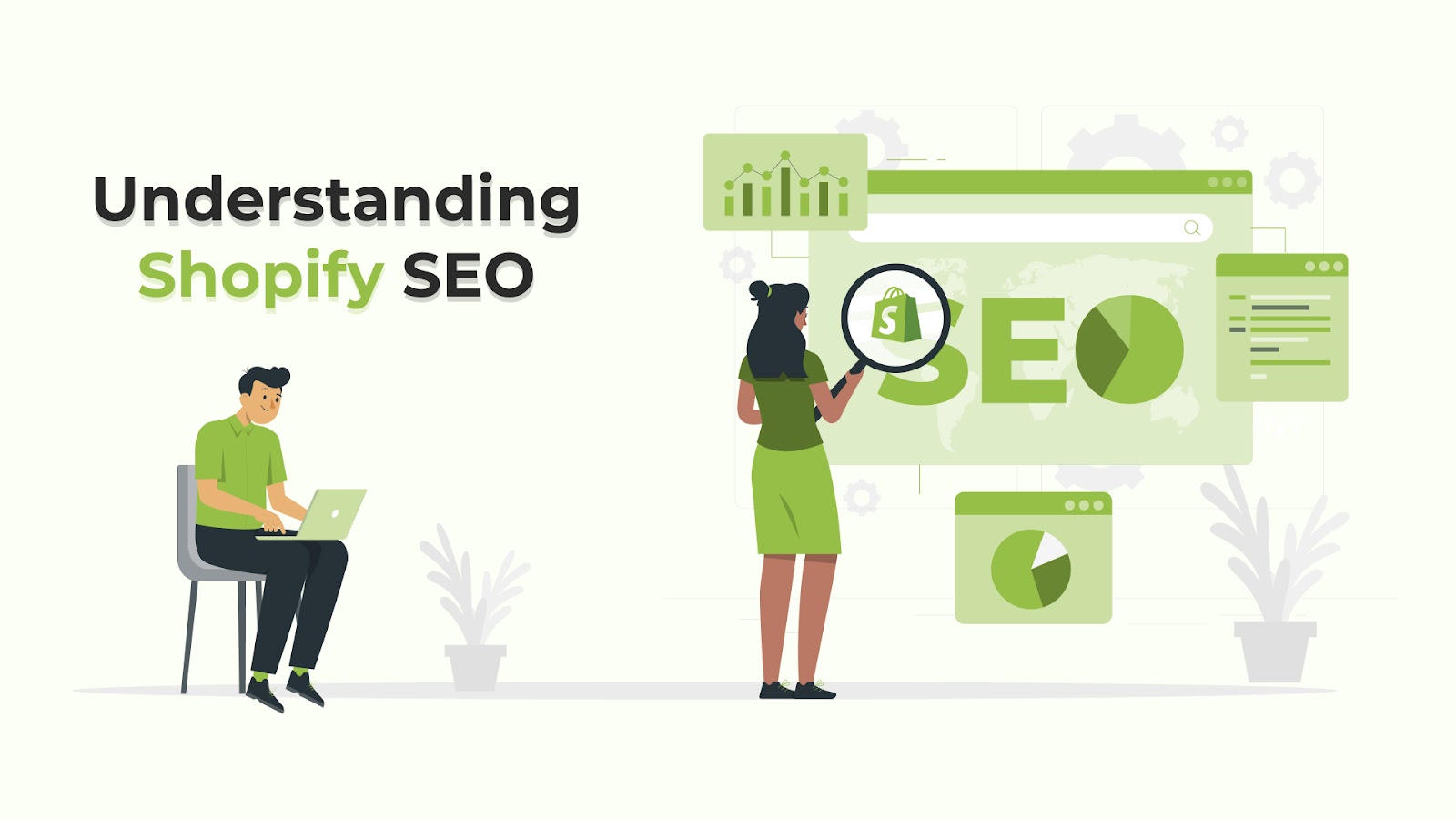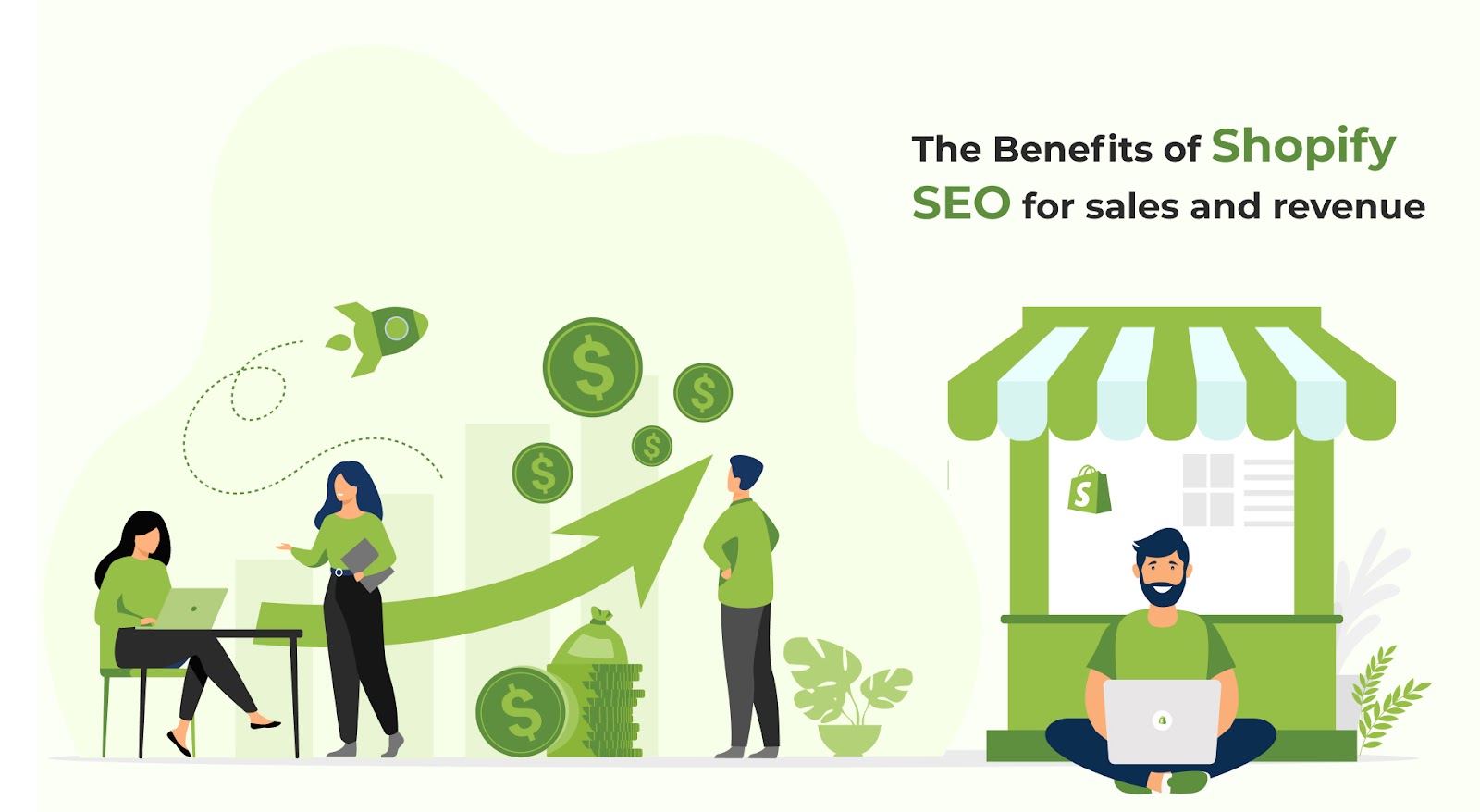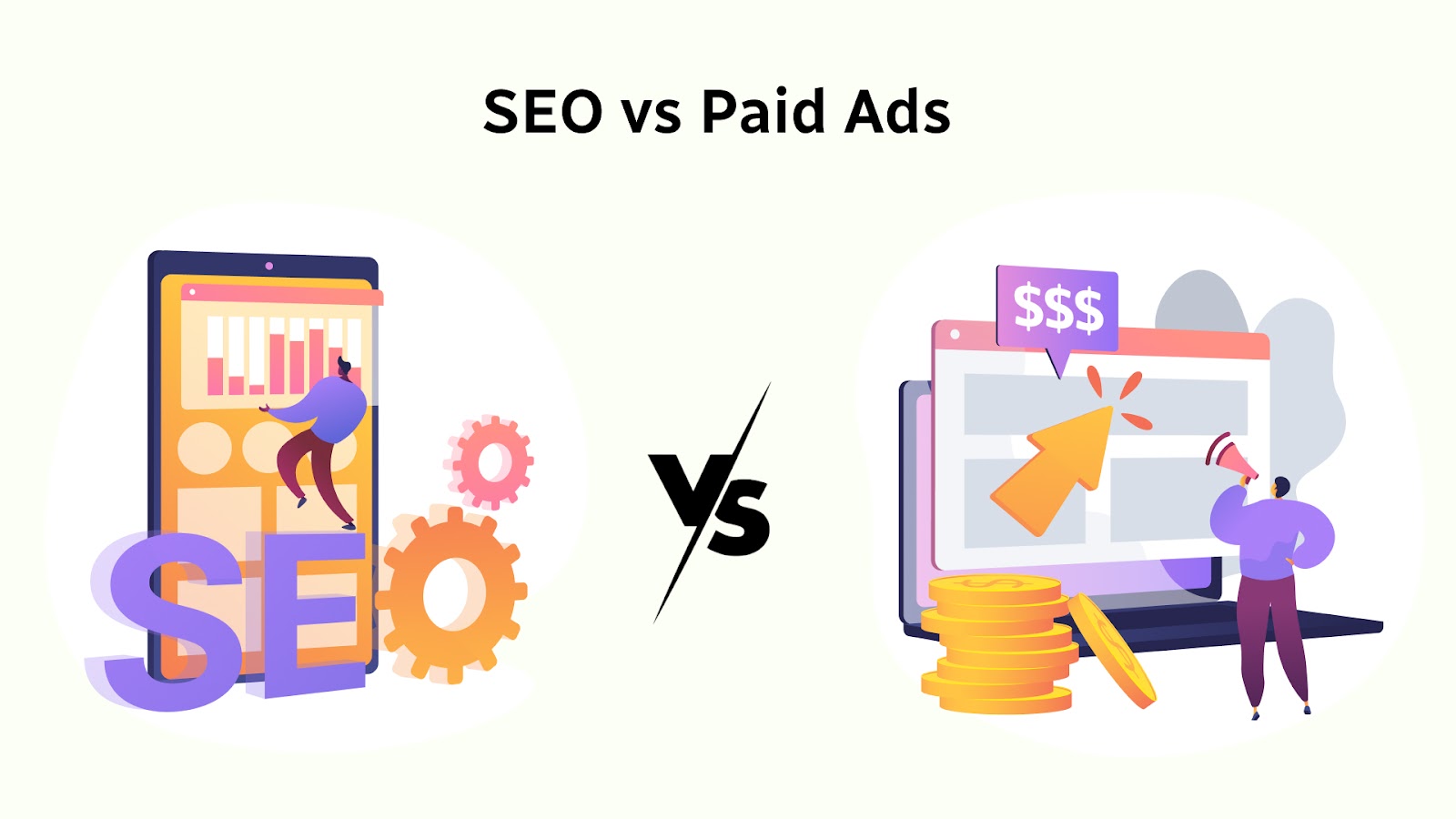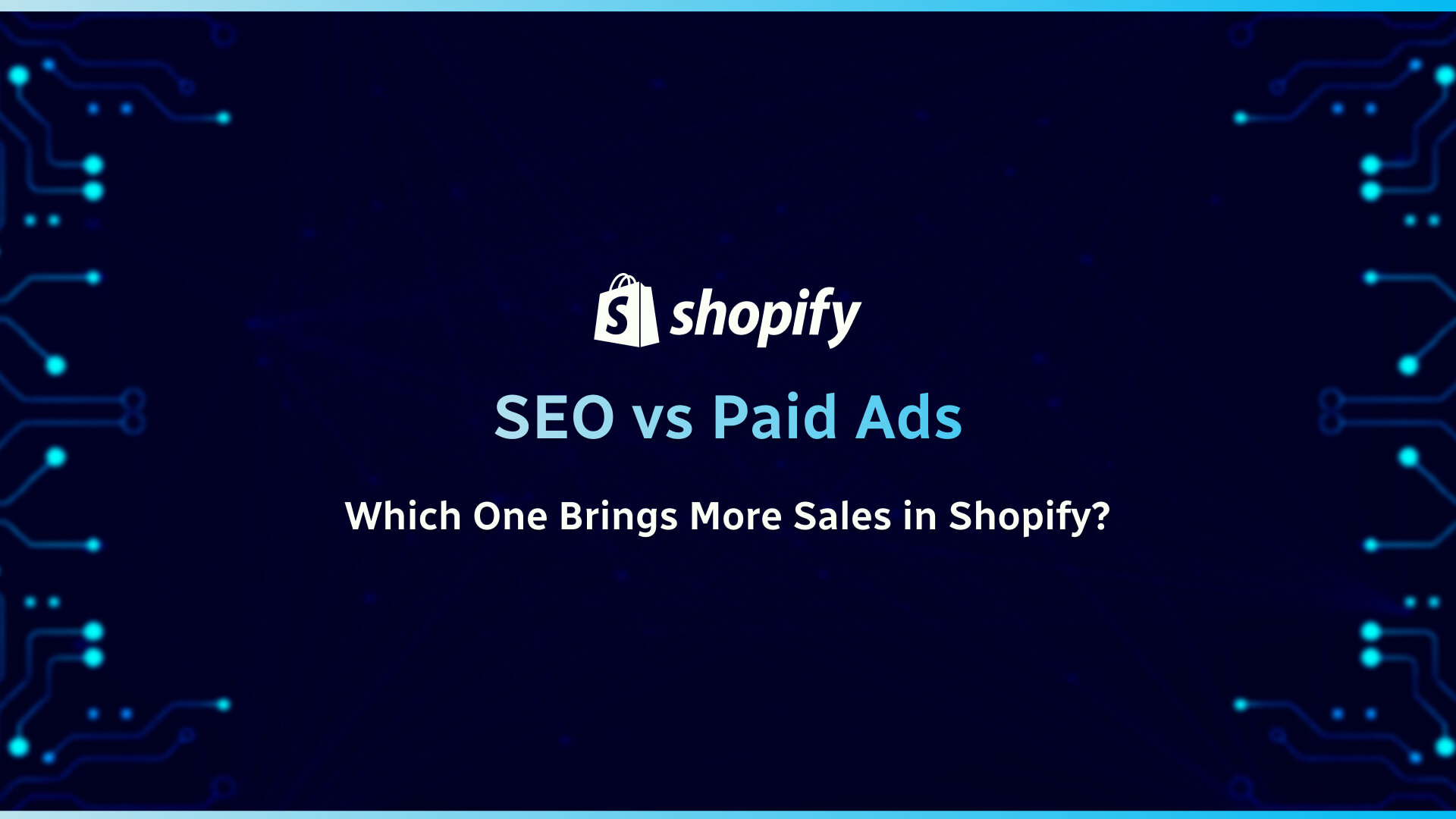- Table of Contents
- Introduction
- Understanding Shopify SEO
- The Power of SEO
- The Effectiveness of Paid Advertising
- SEO vs Paid Ads
- Conclusion
Introduction:
As a Shopify store owner, one of your top priorities is to drive more sales and revenue. While there are multiple ways to accomplish this goal, two of the most popular methods are through search engine optimization (SEO) and paid advertising. In this blog post, we’ll compare the effectiveness of these two approaches and help you decide which
Understanding Shopify SEO
Brief explanation of Shopify SEO and its importance
Shopify SEO (Search Engine Optimization) refers to the process of optimizing your Shopify website to rank higher in search engine results pages (SERPs) such as Google, Bing, and Yahoo.

SEO is important for Shopify store owners because it helps to drive more organic (non-paid) traffic to their site, which can ultimately lead to increased sales and revenue. By optimizing your website’s content, structure, and keywords, you can improve its visibility and relevance to search engines, making it more likely that potential customers will find your store when searching for products or services related to your business.
Some key elements of Shopify SEO include keyword research, meta tags, page titles and descriptions, header tags, alt tags for images, and building high-quality backlinks. It’s also important to ensure that your site is mobile-friendly, loads quickly, and has a user-friendly design that is easy to navigate.
Overall, Shopify SEO is an essential aspect of building and growing a successful online store, as it can help you attract more customers, increase your visibility, and ultimately achieve your business goals.
Optimize your Shopify store for SEO
Optimizing your Shopify store for SEO involves a combination of on-page and off-page tactics. Here are some steps you can take to improve your store’s visibility and ranking in search engines:
Conduct Keyword Research: Identify relevant keywords and phrases that your target audience is searching for and use them throughout your website’s content.
Optimize Your Website Structure: Make sure your website has a clear and intuitive structure, including a hierarchy of categories, subcategories, and product pages. Use descriptive URLs, and include relevant keywords in the page URLs.
Optimize Your On-Page Content: Create high-quality, original content that is relevant to your target audience and includes relevant keywords. Use header tags to organize your content and make it easy to read.
Optimize Your Meta Tags: Use descriptive, keyword-rich title tags and meta descriptions for each page on your website to help search engines and users understand what your pages are about.
Build High-Quality Backlinks: Develop a strategy for building high-quality backlinks from reputable websites in your industry or niche. This can help improve your website’s authority and relevance in the eyes of search engines.
Ensure Mobile-Friendliness: Make sure your website is mobile-friendly and loads quickly on all devices, as this can impact your website’s ranking in search engine results pages.
Use Shopify SEO Apps: Use Shopify SEO apps like Plug in SEO, SEO Manager, and Smart SEO to automate some of the optimization processes and help you identify areas for improvement.
By following these steps, you can optimize your Shopify store for SEO and improve your website’s visibility and ranking in search engine results pages, driving more traffic and sales to your store.
The benefits of Shopify SEO for sales and revenue
Optimizing your Shopify store for SEO can have a significant impact on your sales and revenue. Here are some of the key benefits:

Increased Visibility: By optimizing your website for SEO, you can improve your visibility in search engine results pages and make it easier for potential customers to find your store when searching for products or services related to your business.
More Organic Traffic: SEO can help you drive more organic traffic to your website, which means more potential customers without the need for paid advertising. Organic traffic is also more likely to convert into sales, as these visitors are actively searching for products or services like yours.
Better User Experience: Optimizing your website for SEO often involves improving its design and usability, which can enhance the overall user experience and make it easier for visitors to navigate your site and find what they are looking for.
Increased Trust and Credibility: A well-optimized website can help establish trust and credibility with potential customers. By appearing higher in search engine results pages, you demonstrate that your website is relevant, authoritative, and trustworthy.
Higher Conversion Rates: By attracting more qualified traffic to your site, optimizing your content for specific keywords, and improving your overall user experience, you can increase your conversion rates and generate more sales and revenue.
Overall, the benefits of Shopify SEO for sales and revenue are significant. By optimizing your website for search engines, you can attract more qualified traffic, increase your visibility and credibility, and ultimately drive more sales and revenue to your online store.
The Power of SEO
The advantages of SEO over paid advertising
SEO (Search Engine Optimization) and paid advertising are both effective strategies for driving traffic to your website and increasing sales. However, SEO offers several advantages over paid advertising:

- Long-term Results: SEO is a long-term strategy that aims to improve your website’s visibility in search engines over time. While it may take some time to see results, the benefits of SEO can last for months or even years, whereas paid advertising typically only provides short-term results as long as you continue to pay for ads.
- Cost-Effectiveness: While SEO requires an initial investment of time and resources, it can ultimately be more cost-effective than paid advertising. With SEO, you don’t have to pay for each click or impression like you do with paid advertising. Once you’ve achieved a high ranking in search engine results, you can continue to attract traffic to your website without paying for ads.
- Higher Click-Through Rates: Organic search results often receive higher click-through rates than paid advertisements. Many users are aware that paid ads are advertisements and may skip over them in favor of organic results. By focusing on SEO, you can attract more qualified traffic to your website through organic search results.
- Better Brand Credibility: Websites that rank high in organic search results are often seen as more trustworthy and credible than those that rely on paid advertising. By focusing on SEO and building your website’s authority and credibility, you can establish a strong brand reputation and attract more customers to your website.
Overall, while paid advertising can be effective for driving short-term traffic and sales, SEO offers several advantages for long-term growth and cost-effectiveness. By investing in SEO, you can attract more qualified traffic to your website, improve your brand reputation, and ultimately increase sales and revenue over time.
SEO is a cost-effective method for driving traffic and sales
SEO (Search Engine Optimization) is a cost-effective method for driving traffic and sales for several reasons:
- No Cost Per Click: With SEO, there is no cost per click or impression like there is with paid advertising. Once you have optimized your website and achieved a high ranking in search engine results, you can continue to attract traffic to your website without having to pay for each click or impression.
- Long-term Results: While it may take some time to see results with SEO, the benefits can last for months or even years. Once you have established a strong online presence through SEO, you can continue to attract traffic to your website without having to continually pay for advertising.
- Increased Organic Traffic: SEO focuses on improving your website’s visibility in organic search results, which can attract more qualified traffic to your website. By optimizing your website for relevant keywords and providing high-quality content, you can attract visitors who are more likely to convert into customers.
- Better ROI: SEO can provide a better return on investment (ROI) than paid advertising. While paid advertising can provide short-term results, the costs can add up quickly. With SEO, you can achieve long-term results without having to continually pay for advertising.
- Better Brand Credibility: Websites that rank high in organic search results are often seen as more trustworthy and credible than those that rely on paid advertising. By focusing on SEO and building your website’s authority and credibility, you can establish a strong brand reputation and attract more customers to your website.
Overall, SEO is a cost-effective method for driving traffic and sales because it focuses on improving your website’s visibility in organic search results, which can attract more qualified traffic to your website without the costs associated with paid advertising. By investing in SEO, you can achieve long-term results, a better ROI, and establish a strong brand reputation.
How SEO can increase brand awareness and credibility
SEO (Search Engine Optimization) can increase brand awareness and credibility in several ways:
Improved Search Engine Ranking: SEO focuses on optimizing your website for relevant keywords, which can improve your website’s visibility in search engine results. By appearing at the top of search results for relevant queries, your brand can gain more exposure and visibility, which can increase brand awareness.
Higher Click-Through Rates: Websites that rank high in search engine results often receive higher click-through rates than those that rank lower. By appearing at the top of search results, your brand can attract more qualified traffic to your website, which can increase brand awareness and credibility.
Quality Content: SEO also focuses on creating high-quality, relevant content that provides value to your target audience. By creating content that addresses their needs and interests, you can establish your brand as an authority in your industry and build credibility with your audience.
Backlinks: SEO also involves building backlinks to your website from other high-quality websites. Backlinks can improve your website’s authority and credibility, which can increase brand awareness and make your website more attractive to potential customers.
Overall, SEO can increase brand awareness and credibility by improving your website’s search engine ranking, attracting more qualified traffic to your website, creating high-quality content, and building backlinks to your website. By investing in SEO, you can establish your brand as an authority in your industry, increase brand awareness, and ultimately drive more sales and revenue.
The long-term benefits of SEO for your Shopify store
SEO (Search Engine Optimization) can provide long-term benefits for your Shopify store in several ways:
Increased Organic Traffic: By optimizing your website for relevant keywords and providing high-quality content, you can attract more organic traffic to your website. Unlike paid advertising, which requires ongoing investment to maintain traffic, organic traffic can continue to flow to your website even after you stop actively optimizing it.
Improved Brand Credibility: Websites that rank high in organic search results are often seen as more trustworthy and credible than those that rely on paid advertising. By focusing on SEO and building your website’s authority and credibility, you can establish a strong brand reputation and attract more customers to your website over the long term.
Better ROI: SEO can provide a better return on investment (ROI) than paid advertising over the long term. While paid advertising can provide short-term results, the costs can add up quickly. With SEO, you can achieve long-term results without having to continually pay for advertising.
Sustainable Competitive Advantage: By investing in SEO, you can establish a sustainable competitive advantage over time. As your website’s authority and credibility grow, it can become more difficult for competitors to outrank you in search engine results, making it easier for you to attract and retain customers over the long term.
Lower Customer Acquisition Costs: As your website’s organic traffic grows, your customer acquisition costs can decrease over time. Unlike paid advertising, which requires ongoing investment to maintain traffic, organic traffic can continue to flow to your website even after you stop actively optimizing it, which can lead to lower customer acquisition costs over the long term.
Overall, SEO can provide long-term benefits for your Shopify store by increasing organic traffic, improving brand credibility, providing a better ROI, establishing a sustainable competitive advantage, and lowering customer acquisition costs over time. By investing in SEO, you can position your Shopify store for long-term success and sustainable growth.
The Effectiveness of Paid Advertising
Paid advertising on Shopify refers to the process of paying for ad placements on various advertising platforms, such as Google Ads, Facebook Ads, and Instagram Ads, to promote your Shopify store and products. With paid advertising, you can target specific audiences and demographics, track the effectiveness of your ads, and adjust your strategy accordingly.
Different types of paid advertising
There are several types of paid advertising that businesses can use to promote their products or services. Some of the most common types of paid advertising include:
Search Engine Advertising: This involves creating ads that appear at the top of search engine results pages (SERPs) when users search for specific keywords. Examples include Google Ads and Bing Ads.
Social Media Advertising: This involves creating ads that appear on social media platforms, such as Facebook, Instagram, Twitter, and LinkedIn. Advertisers can target specific demographics and interests to reach their target audience.
Display Advertising: This involves creating banner ads that appear on websites, blogs, and other online platforms. Advertisers can use targeting to reach specific demographics and interests, and can use retargeting to show ads to users who have previously interacted with their website.
Video Advertising: This involves creating video ads that appear on various online platforms, including YouTube, Facebook, and Instagram. Advertisers can target specific demographics and interests, and can use analytics to track the performance of their ads.
Influencer Advertising: This involves partnering with influencers on social media platforms to promote products or services. Influencers can help businesses reach new audiences and build trust with their target demographic.
Native Advertising: This involves creating ads that blend in with the content of the platform they are displayed on. Examples include sponsored content on blogs or social media platforms, and product placement in video content.
Overall, paid advertising can be a highly effective way to promote products or services and drive sales. However, it’s important to carefully manage ad spend and monitor the performance of ad campaigns to ensure that businesses are getting the best possible ROI.
The benefits and drawbacks of paid advertising for sales and revenue
Paid advertising can have both benefits and drawbacks for sales and revenue.
Benefits:
- Targeted Reach: Paid advertising allows businesses to target specific demographics and interests, which can increase the chances of reaching the right audience and generating more sales.
- Quick Results: Paid advertising can generate results quickly, as ads can be launched and start generating traffic and sales almost immediately.
- Increased Brand Visibility: Paid advertising can increase brand visibility and awareness, which can lead to more sales and revenue in the long run.
- Measurable Results: Paid advertising provides detailed analytics and metrics, which can help businesses track the effectiveness of their ad campaigns and make adjustments to improve results.
Drawbacks:
- High Costs: Paid advertising can be expensive, especially for small businesses with limited budgets. Businesses need to carefully manage their ad spend and ensure that they are getting a positive ROI.
- Ad Blindness: Consumers are becoming increasingly immune to ads, and may not even notice them, especially if they are intrusive or irrelevant.
- Limited Lifespan: Paid advertising campaigns have a limited lifespan, and ads may stop generating results once the campaign has ended.
- Competition: Competition for ad placements can be high, which can drive up costs and make it harder to reach the right audience.
Overall, paid advertising can be a highly effective way to drive sales and revenue, but it’s important to carefully weigh the benefits and drawbacks and ensure that businesses are getting a positive ROI. It’s also important to consider other marketing strategies, such as SEO and content marketing, to complement and support paid advertising efforts.
SEO vs Paid Ads
A comparison of SEO and paid advertising in terms of sales and revenue.
SEO and paid advertising are two popular marketing strategies that can help businesses increase their sales and revenue. Here’s a comparison of these two strategies:

Cost: SEO is generally a more cost-effective strategy than paid advertising, as businesses can optimize their website for search engines without paying for ads. Paid advertising can be more expensive, as businesses need to pay for ad placement and clicks.
Timeframe: SEO is a long-term strategy that takes time to show results, as it involves optimizing a website and building authority over time. Paid advertising can generate immediate results, as ads can start generating traffic and sales almost immediately.
Targeting: Both SEO and paid advertising allow businesses to target specific demographics and interests. However, paid advertising generally provides more advanced targeting options and allows businesses to reach more specific audiences.
Trust: SEO can help businesses build trust and credibility with their audience, as high rankings in search engines can indicate that a website is authoritative and trustworthy. Paid advertising can sometimes be seen as less trustworthy, as consumers may view ads as less objective than organic search results.
Competition: SEO can be more competitive, as businesses are competing to rank higher in search engine results pages. Paid advertising can also be competitive, as businesses are competing for ad placements and clicks.
Longevity: SEO efforts can have long-lasting effects, as website optimization and building authority can lead to sustained traffic and sales over time. Paid advertising, on the other hand, has a limited lifespan and ads may stop generating results once the campaign has ended.
Overall, both SEO and paid advertising can be effective strategies for increasing sales and revenue. However, businesses need to carefully consider the costs, timeframe, targeting, trust, competition, and longevity of these strategies and choose the ones that are best suited for their business goals and budget.
Factors that can affect the effectiveness of SEO and paid advertising
Several factors can affect the effectiveness of SEO and paid advertising. Here are some of the most important factors to consider:
Competition: The level of competition in a business’s industry can have a significant impact on the effectiveness of both SEO and paid advertising. High competition can make it harder to rank well in search engines or get ad placements, while low competition can make it easier.
Target audience: Understanding the target audience and their interests and behavior is critical for both SEO and paid advertising. Businesses need to create content and ads that resonate with their audience and drive engagement and conversions.
Budget: Both SEO and paid advertising require a budget, and the size of the budget can affect their effectiveness. Paid advertising can require a higher budget, while SEO can be more cost-effective but requires a longer-term investment.
Quality of content: The quality of a business’s website content and ad creative can have a significant impact on the effectiveness of both SEO and paid advertising. High-quality content that is engaging, informative, and relevant to the target audience can help drive traffic, engagement, and conversions.
Technical factors: For SEO, technical factors such as website speed, mobile responsiveness, and site structure can affect the effectiveness of optimization efforts. For paid advertising, factors such as ad placement, ad format, and targeting can affect the effectiveness of ad campaigns.
Search engine algorithms: Search engine algorithms are constantly evolving, and businesses need to stay up-to-date with changes to ensure that their SEO efforts are effective. Changes to algorithms can also affect the effectiveness of paid advertising, such as changes to ad formats or targeting options.
Overall, the effectiveness of both SEO and paid advertising can be influenced by a wide range of factors, and businesses need to carefully consider these factors and adapt their strategies accordingly to achieve the best results.
Tips for choosing the best approach for your Shopify store
When deciding on the best approach for your Shopify store, it’s important to consider your business goals, budget, target audience, and competition. Here are some tips to help you choose the best approach for your store:
Understand your target audience: Knowing your target audience’s behavior, interests, and preferences can help you determine the best approach to reach them. If your audience is highly active on social media, paid advertising on social platforms may be a good choice. If they are more likely to search for products on search engines, SEO may be a better option.
Set realistic goals: Determine what you want to achieve with your marketing efforts, whether it’s to increase website traffic, boost sales, or improve brand awareness. Setting realistic goals will help you determine which approach is best suited to achieve those goals.
Consider your budget: Determine your marketing budget and allocate it according to your goals and the most effective approach for your business. Paid advertising may require a larger budget, while SEO may be more cost-effective in the long run.
Analyze your competition: Research your competitors and their marketing strategies to determine the level of competition and what approaches are working for them. This can help you identify gaps in the market and opportunities for your business.
Experiment and measure results: Try different marketing approaches and measure their effectiveness to determine which approach is working best for your business. Continuously analyze and adjust your strategy to ensure you’re achieving your goals and staying competitive.
By considering these factors and taking a strategic approach, you can determine the best approach for your Shopify store and achieve your marketing goals.
Conclusion:
Ultimately, the decision between SEO and paid advertising comes down to your specific goals, budget, and competition in your niche. Both approaches have their advantages and disadvantages, and the best strategy for your Shopify store will depend on a variety of factors. By understanding the strengths and weaknesses of each approach, you can make an informed decision and create a plan to drive more sales and revenue for your business.





